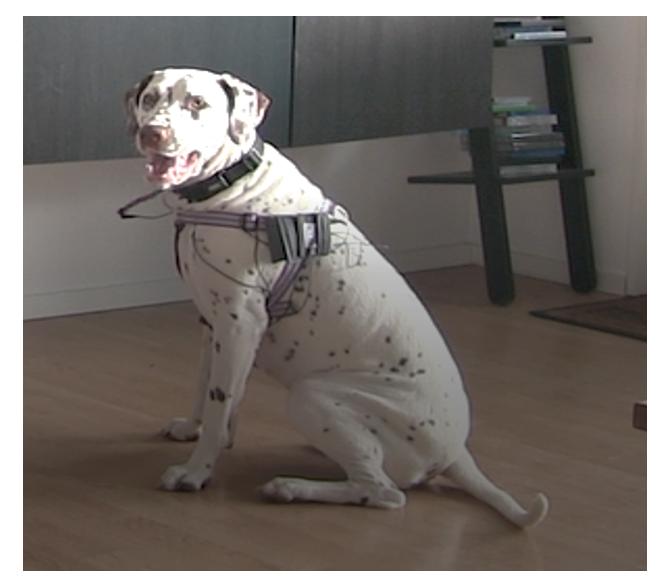Methods
Participants
In total 36 (Females = 20, Males = 16) dogs and their female owners participated in the study. The dogs were of no particular breed, but all dogs were kept as companion dogs. The age of the dogs ranged from 1-13 years. The dog owners volunteered to participate in the study by responding to an online questionnaire. In order to assure that the tonal patterns produced would be comparable between humans, only female dog owners were recruited for this study. Since most of the communication takes place at home, the test described below was performed in the home of each owner, respectively.
Test procedures
The dog and owner were each equipped with a microphone (fig. 1) to record the vocalized communication and the tests were also video recorded.

During the first session (free talk; Table 1), the dog and owner communicated with each other without interruptions for approximately one minute. During this minute, the owner was allowed to decide by herself what she wanted to say and how to talk to the dog, in order to create as natural interaction as possible.
The second session (treat or toy; Table 1), consisted of three phases, and started directly after the first session. The owner presented a treat or toy to the dog and then placed it on the nearby tripod. The treat or toy was used as a teaser to increase the probability of the dog vocalizing, since it is common that dogs vocalize in a request situation when they want something from the owner. After the treat or toy was placed on the tripod, the owner followed a personalized manuscript. The first phase started after the treat or toy was placed on the tripod and the owner was instructed to stay quiet in order to let the dog initiate the communication. When the dog started to vocalize, or in some other way initiate communication, the refusal phase started. During this second phase, the owner acknowledged the dog’s wishes, but pretended to be unable to help the dog at this moment, using words chosen by the owner. The main message from the owner was that the dog must wait in order to receive the treat or toy. This was further communicated by the owner while looking at her phone. The dog owner chose when this phase ended. However, the phase lasted approximately 45 seconds. The treat or toy stayed on the tripod during the entire refusal phase. Directly after the refusal phase, the affirmative phase began. During this third phase, the owner looked at the dog and mediated understanding of the dog’s wishes and was now willing to help the dog. Before the dog received the treat or toy, a short dialogue was held, which lasted approximately 20 s.

After the test, the dog owners were sent an online version of the validated Dog Personality Questionnaire (DPQ) translated to Swedish.
Responsible for this page:
Director of undergraduate studies Biology
Last updated:
05/22/19
